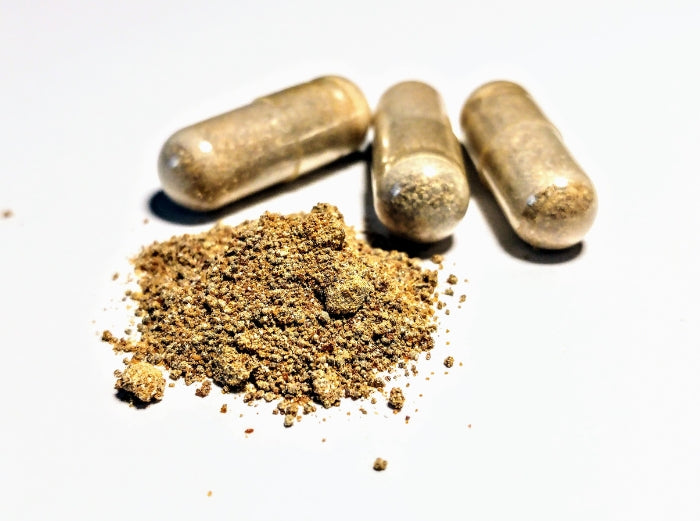Long reserved for those familiar with traditional medicines, Ashwagandha (Withania somnifera) has now become one of the most popular natural remedies for managing stress, improving sleep, and strengthening emotional balance.
Its status as an “adaptogenic plant” has earned it growing popularity, supported by numerous clinical studies. But like any active substance, it is not free from contraindications.
What are its actual side effects? Can it be taken continuously? And are there any long-term risks?
This article provides an overview to better understand the precautions to take.
Is Ashwagandha a Dangerous Plant? What Science Says
Available data indicate that Ashwagandha is generally well tolerated by the body. Several clinical trials conducted over periods of 4 to 12 weeks report very few adverse effects, with good comparability to placebo [1,2].
The side effects reported are generally rare and mild: minor digestive disturbances (bloating, nausea), temporary headaches, or slight drowsiness.
To date, no serious toxicity has been associated with the consumption of standardized root extracts within the recommended dosages.
What Are the Potential Side Effects of Ashwagandha?
Although rare, certain adverse effects may occur, especially in cases of excessive dosage or individual sensitivity:
-
Fatigue or drowsiness, particularly when combined with other sedatives or hypnotics.
-
Moderate gastrointestinal disturbances (nausea, mild diarrhea).
-
Isolated allergic reactions: skin rashes, itching, or discomfort.
These manifestations are generally temporary and reversible upon discontinuation of supplementation.
They are also more frequent in cases of overdose or poor-quality extract.
What Contraindications Should Be Known?
As with any active supplement, some situations require caution or abstention:
-
Pregnancy and breastfeeding: Ashwagandha is not recommended due to insufficient studies on its safety during these sensitive periods.
-
Uncontrolled hyperthyroidism: the plant may stimulate thyroid hormone production, with a potential risk of imbalance [3].
-
Anxiolytic or sedative treatments: since Ashwagandha can enhance relaxing effects, interactions are possible.
If you are under medication, have a chronic condition, or an allergic background, prior medical advice is strongly recommended.
Can Ashwagandha Be Taken Long-Term?
Available clinical studies generally span 4 to 12 weeks, with dosages up to 600 mg/day of standardized extract. No significant adverse effects on liver or kidney function have been observed within these durations [1,2,4].
However, in the absence of long-term scientific data, caution suggests adopting cyclical use.
A course of 1 to 2 months, followed by a break of one to two weeks, is often recommended to limit the risk of metabolic adaptation or tolerance.
What Precautions Should Be Taken for Safe Use?
The effectiveness of Ashwagandha strongly depends on the quality of the extract used and its suitability for your profile. For safe and optimal supplementation, make sure to:
-
Choose a standardized root extract, ideally KSM-66®, which guarantees a consistent withanolide content (link to related articles).
-
Respect the recommended dosages: 300 to 600 mg per day is sufficient in most cases.
-
Avoid uncontrolled combinations, especially with alcohol, sleeping pills, or high doses of melatonin.
-
Start gradually if you are particularly sensitive or prone to anxiety.
Medical supervision is strongly advised in case of doubt, especially for those under treatment or with specific hormonal conditions.
Conclusion: The Risks of Ashwagandha
A major adaptogenic plant of Ayurvedic pharmacopoeia, Ashwagandha combines clinically demonstrated efficacy and good tolerance for most users.
Nevertheless, its use should remain reasoned, individualized, and adhere to certain precautions, especially in cases of existing conditions or ongoing treatments.
To fully benefit from it, it is essential to choose a high-quality form, such as the KSM-66® extract, used in our Argalys formula, combined with magnesium bisglycinate and L-tryptophan.
This trio of active ingredients works synergistically to sustainably support nervous balance, stress management, and sleep quality — without dependence or sedative effects.
A complete solution for those seeking a natural, reliable, and well-tolerated response to chronic stress and nervous fatigue.
References
-
Chandrasekhar K et al. Safety and efficacy of a high-concentration Ashwagandha root extract: a randomized, double-blind, placebo-controlled study. Indian J Psychol Med. 2012;34(3):255–262.
-
Salve J et al. Adaptogenic and anxiolytic effects of Ashwagandha root extract: A double-blind, randomized, placebo-controlled clinical study. Cureus. 2019;11(12):e6466.
-
Lopresti AL et al. A systematic review and meta-analysis on the effectiveness and safety of Ashwagandha. J Clin Med. 2021;10(8):1991.
-
Tandon N, Yadav SS. Contributions of Indian Council of Medical Research (ICMR) towards traditional medicine. J Ethnopharmacol. 2017;197:39–45.
 04 74 03 98 80
04 74 03 98 80









